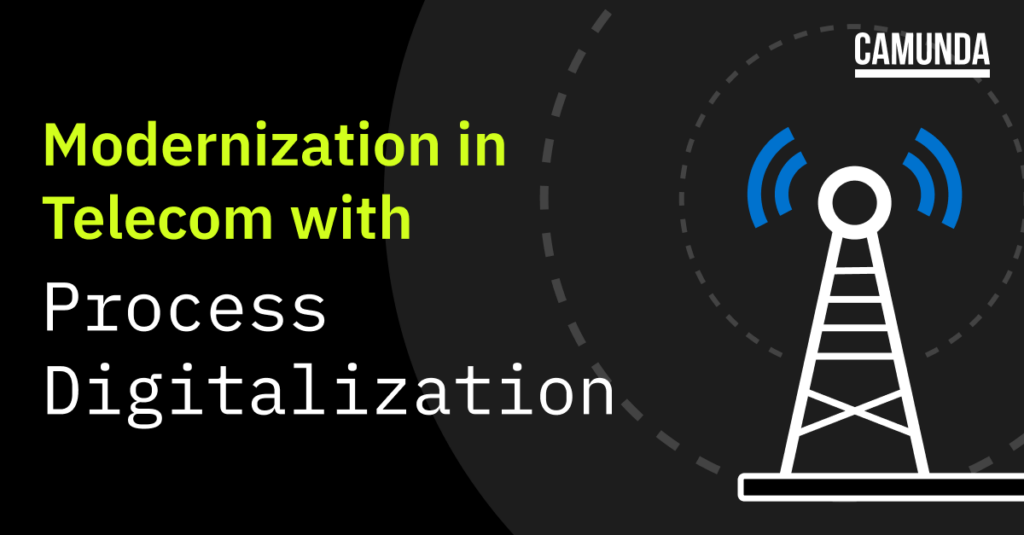Achieving the Customer Benefits of Digital Transformation
Perhaps more than any other industry, telecommunications suffers under the burden of numerous technology silos. These silos, in turn, lead to siloed customer channels across a plethora of business and consumer services, as well as marketing campaigns, product offers, and point-of-sale capabilities.
Telecom business stakeholders, however, are only too aware that they require customer-facing processes that support end-to-end customer journeys. After all, customers don’t care about technology silos or disparate customer channels. They care about obtaining the services they require with a minimum of hassle.
How to achieve this journey-centric vision for digital transformation within the constraints of the telecom technology landscape, however, has proven to be more challenging than expected. Telcos around the globe have made many wrong turns on the difficult path to modernization.
Putting process orchestration at the center of this challenge, of all the approaches telcos have attempted, has proven to be the glue that finally brings the right capabilities to the customer journey – to the benefit of business and consumer customers alike.
Digital challenges at Vodafone Germany
Vodafone Germany is the largest national company in the massive global Vodafone Group, counting about half of all Germans as customers.
Its OTELO consumer offering and branded reseller IT system both struggled under the burden of multiple services providing a confusing array of customer-facing channels.
The siloed technology supporting these services and channels proved to be an impediment to transformation, as they lacked an effective API layer. The result: high maintenance and operating costs, slow time-to-market, and an inconsistent customer experience.
Fixing these problems was particularly urgent for Vodafone stakeholders because of rapidly shifting customer demands. Not only were customers demanding new services, but those services were increasingly data-centric – thus requiring both greater agility as well as technical performance.
Given the importance of the customer journey, creating an omnichannel layer to unify the customer experience across channels was an essential modernization requirement. Doing so while supporting ongoing product improvements was also a must-have.
Vodafone’s digitalization efforts
Centering its transformation efforts on customer-facing business processes proved the key to success for Vodafone. We call this transformation of processes and roles within an organization digitalization, to differentiate it from the conversion of data from analog to digital we call digitization (see my last article on digitalization).
Vodafone first step to this digitalization was leveraging the Camunda Modeler to create a visual map of customer-facing processes that provided both business and IT stakeholders with a common point of understanding.
During the process discovery phase, the Vodafone team then uncovered hidden tasks and other process issues. Using the Camunda Platform, the team leveraged this greater visibility into the company’s processes, not only to understand their as-is state, but also to optimize them within Vodafone’s new cloud-based framework.
This digitalization was at the crux of the transformation effort. It took into account Vodafone’s customer journey requirements while driving the creation of an intelligent proxy layer that abstracted its middleware and user interface backend.
The power of BPMN for system migration
The Camunda Platform leverages the Business Process Model and Notation (BPMN) standard, which offered the Vodafone team the ability to migrate the entire system one process at a time, without impacting the customer experience during the transition.
This BPMN-centric migration process even supported the ability to implement updates during the migration, including important regulatory compliance changes as well as ongoing minor improvements to the services in question.
This double-sided transformation – combining process digitalization with a move to the cloud – would not have been possible without the BPMN abstraction that the Camunda Platform provided.
Camunda not only offers the process modeling capabilities necessary to bring business and IT stakeholders to the table, but it also offers the technical capabilities necessary to implement those processes via Java and a cloud native microservices architecture.
The Intellyx take
Digital transformation can be challenging to pin down. Is it about technology? Processes? Customers?
In truth, it involves all three, making digital transformation difficult to understand, let alone get right.
For telcos, digital transformation is a particularly important priority because they require all three types of transformation.
Supporting better customer experiences across the customer journey is essential for maintaining profitability and minimizing customer churn.
Resolving legacy technology issues by migrating some systems to the cloud can also transform the way telcos leverage technology to meet business needs.
Most importantly, however, is the role that process digitalization plays – not only automating processes but transforming them, while simultaneously affecting the technology change necessary to modernize the legacy technology landscape.
With the help of Camunda, Vodafone Germany has successfully tackled all three facets of digital transformation, delivering better customer journeys for businesses and consumers while continuing the inexorable improvement in services so essential for remaining competitive in today’s difficult telecommunications business landscape.
Copyright © Intellyx LLC. Camunda is an Intellyx customer. None of the other organizations mentioned in this article is an Intellyx customer. Intellyx retains final editorial control of this article. No AI was used to write this article.

